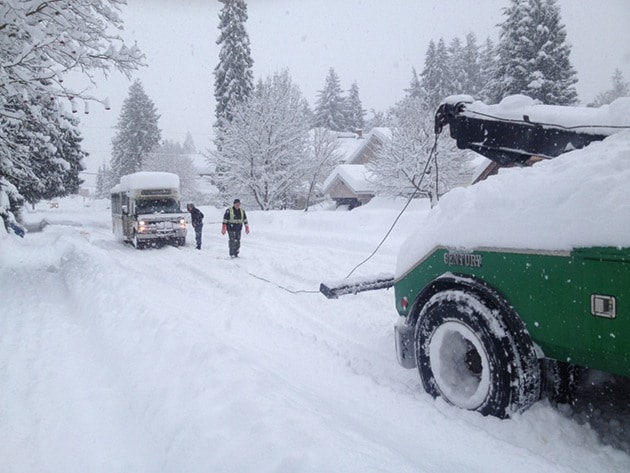About a year after transit routes in Revelstoke were re-jigged, costs are up and ridership is down.
Total ridership in 2013 was 21,387 riders, down from 23,089 in 2012.
Net local cost – the amount Revelstoke pays after BC Transit covers about half the cost – is up. It was $170,284 in the 2012/13 budget, and has increased to $227,954 in the 2013/14 budget. That’s a 34-per-cent increase.
Ryan Little, Regional Transit Manager for BC Transit, will provide an update to city council on Feb. 25, and will seek to explain the results of the revised transit system.
Little admits the numbers aren’t ideal: “They’re not great,” he said.
But these bottom-line numbers don’t tell the whole story.
Service hours have increased by 13 per cent, and revenues are up by 37 per cent.
Conventional ridership is actually up by two-per-cent, while other types of ridership are down. Health Connection rides have dropped by 14 per cent, and handyDART rides have dropped by 47 per cent. This suggests, in part, that more people are using the new three-route conventional system, while fewer take the handyDART. But there are other reasons handyDART ridership has suffered.
Little said BC Transit is responding to the drop in handyDART ridership by changing the service’s hours, eliminating a two-hour mid-day break between 11:30 a.m. and 2:30 p.m. to make the hours 8:15 a.m. to 3:15 p.m. starting Feb. 1.
A review of the transit system was mentioned in passing during the city’s budget process. Little said BC Transit’s financial commitment to the system will remain.
In late 2012, a new, three-route system replaced the older two-route system. Riders complained that the older system was far too circuitous; it took too long to get from A to B in Revelstoke because the buses scoured too many sidestreets for riders.
In his presentation, Little will discuss comparisons with other similar communities, but he cautioned it’s difficult to make direct comparisons. For example, he said HandyDART service is costly; comparing Revelstoke with another community that doesn’t have the service isn’t fair.
He noted Revelstokians aren’t the only ones who observe and comment on the phenomenon of frequently empty buses.
“We hear that in every community where there’s transit,” Little said. It boils down to economics; maintaining the schedule during non-peak hours works out to be more efficient than trying to run short shifts.
The changes don’t factor in the biggest shift in transit ridership in Revelstoke: the popular ski shuttle to RMR is not part of BC Transit system.
The City of Revelstoke had expected cost increases with the new three-route system, but it was hoped the new routes and a new bus would boost ridership.
